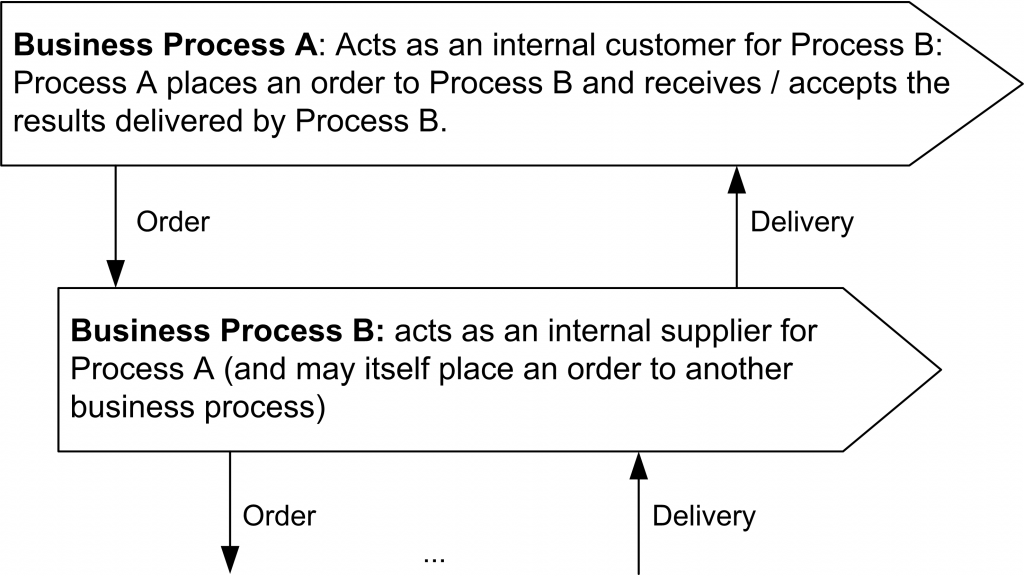This article summarizes the study “The Performance Effects of Process Cascade-Based Organizational Design” by Kohlbacher M. and Weitlaner D., which was presented at the IEEE 2011 7th International Conference on Next Generation Web Services Practices in Salamanca, Spain, in October 2011.
An organizational design based on process cascades is an approach where the business process design of the organization is based on internal customer-supplier relationships. This design principle was originally developed by Schantin (2004) and Suter (2004; 2009). The principle is based on the idea that, in general, each business process is activated by an order which is placed by another business process. The receiving process executes the order and delivers the results back to the ordering process. The ordering process therefore acts as an internal customer for the receiving process, which acts as an internal supplier. The approach is recursive, i.e. the supplier process may act itself as a customer process which places an order to a third process, and so forth. The principle is illustrated by the following figure:
The study discusses the idea of process-cascade based organizational design and empirically investigates the impact of such a design on firm performance. The empirical findings of the study are that firms which implemented process-cascade-based organizational design achieve higher firm performance. The paper is available via IEEE Xplore.
